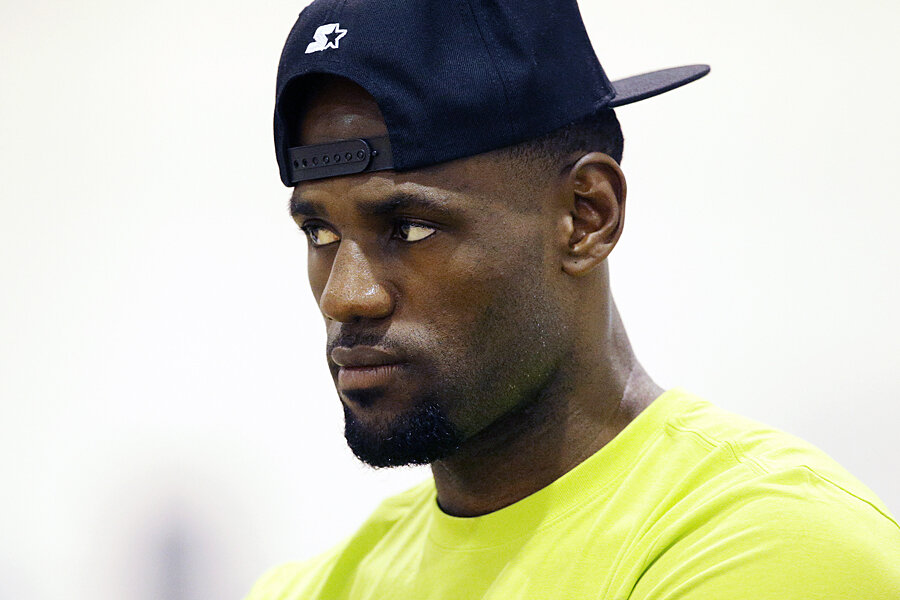LeBron James to Cleveland will have a major financial impact
It was an event epitomized by a Twitter hashtag: #LeBronWatch2014.
That was soon replaced with another: #imcominghome.
LeBron James announced Friday that he will be returning to his hometown Cleveland Cavaliers next season. But in the pandemonium that swirled around the days leading up to the decision, there was much talk about how much money he'll make, has made, and how much money others have made thanks to Mr. James.
First, the NBA announced Thursday the salary cap for the 2014-15 season will be $63.065 million, up from $58.679 million last year. This means that the players on the team cannot be paid more than $63.065 million combined. However, NBA teams must spend 90 percent of their salary cap, making the minimum $56.759 million.
Between June 1, 2013, and June 1, 2014, James made $72.3 million, making him the third-highest-paid athlete in the world and the highest-paid basketball player during that time, according to Forbes. But most of his money didn't come from the Miami Heat. Breaking the money down, 19.3 million came from a combination of salary and earnings. The rest of the money, $53 million, comes from endorsements.
Now, he is reportedly seeking at least $20 million per year, according to various reports. The Cavaliers may offer him a contract that gives him $20.7 million in his first season, the Cleveland Plain Dealer reports.When James was at the Cleveland Cavaliers from 2003 to 2010, he earned about $60.7 million, according to USA Today. He saw the biggest hike in his salary between between 2006-07 and 2007-08 seasons, when he went from earning $5.8 million to $13 million. He earned about $15.8 million in his last season with the Cavaliers before going to the Miami Heat.
James actually took a pay cut when he went to the Heat. He earned $14.5 million in his first season with the Heat, before making $17.5 million and $19 million in his second and third seasons.
But what may be of interest to some is how much of his money comes from endorsements.The composition of what he makes between his NBA salary and the endorsements from Nike and elsewhere has been on a roller coaster. In his rookie reason James got 23 percent of his money from the Cavaliers. When James' earnings jumped, he went from getting 26.4 percent of his money from the Cavaliers to about 52 percent. During the 2009-2010 season, 60.8 percent of his money came from basketball. Now, he gets 64 percent of his money from endorsements, which could mean that the final salary figure isn't at the top of his priority list (although he won't take a pay cut this time, as he has in previous years).
However, James isn't making money just for himself. James announced his 2010 move during a one-hour long TV special on ESPN called ‘The Decision.’ The special reportedly grossed $6 million in ad revenues, according to the Plain Dealer. At the same time, the Boys and Girls Clubs of America received $2.5 million, as the TV special was broadcasted from the Boys and Girls Club in Greenwich, Conn.
The free agent's decision not only affects the teams, but also the communities. James’ economic impact as a Cavalier was estimated to be $50 million to $80 million a year, says WKYC, an NBC-affiliated television station in Cleveland. When he left for Miami, Cleveland was estimated to lose $48 million from James' absence, according to the Plain Dealer. Why? James was an attraction for the Northeast Ohio region. Without him, there were fewer people attending the Cavaliers' games, and that meant fewer people paying for parking, food, hotel, and travel, let alone tickets and team merchandise. For Miami, it isn't clear what will happen to the city's economy upon James' exit, but Forbes has reported that the Heat would lose $100 million if James does not come back.
Editor's note: This story has been updated.






